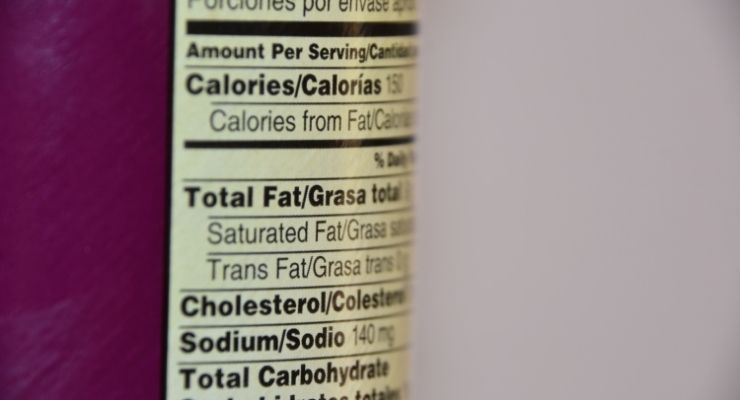By Joerg Gruenwald, analyze & realize GmbH06.02.22
In contrast to many regulatory issues such as marketability of plants or upper limits of vitamins/minerals, product labeling requirements are harmonized across the European Union. The EU law on food information to consumers, Regulation (EU) No 1169/2011, provides comprehensive directives for label information including presentation of allergens, nutrition facts, and origin information for fresh meat. This EU regulation is directly applicable in all member states.
The common understanding of this regulation was that the ingredient list (not to be confused with the nutrition table) is required to state, in descending order of percentage of weight, the actual ingredients contained in the product. This includes foodstuff (e.g., “wheat flour” or “honey”), any added nutrients (e.g., “zinc oxide” or “garlic extract”), and all additives.
Therefore, when adding a vitamin as an ingredient, the understanding so far was that the actual ingredient “cholecalciferol” or “retinyl acetate” was to be stated in the ingredient list. “Vitamin D” or “vitamin A,” on the other hand, was the required term in the nutrition table for clarity to the consumer, who might not recognize “cholecalciferol” as a vitamin D equivalent.
This has now been rectified. Recently, a case concerning the labeling of vitamins ended up before the Court of Justice of the European Union (CJEU) examining the question of how vitamins must be declared in the list of ingredients.
The Court of Justice ruled that the ingredient list for a food containing a vitamin does not necessarily need to indicate the specific vitamin compound used. This refuted the view of Hungarian authorities who, working on the common understanding, had requested the name of the specific vitamin compound be used in the list of ingredients in a specific case.
The decision will come as a relief to both FBOs and consumers. While the specific vitamin compound must be known and be authorized for use in food, the confusing situation of two different names being stated on the label is now no longer an issue. For consumers, of course, there is no need to know the precise compound, or to guess which of the compounds in the ingredient list actually refers to that vitamin listed in the nutrition table, or stated in relation to a health claim.
However, there is still national variation. For example, in Germany, a Food Information to Consumers Regulation is complemented by the national Food Information Implementing Regulation (LMIDV). It stipulates, among other things, that beer marketed in Germany must be labeled with a list of ingredients. (European legislation does not require ingredients lists for drinks with an alcohol content of more than 1.2% by volume.) This implementation basically continues the legal situation applicable since 1994.
Thus, even with recent harmonization of food labeling regulations in Europe, the situation can still be confusing. This is especially true for FBOs wishing to market their products in more than one EU country.
It makes sense, therefore, to commission the help of experienced consultancies such as analyze & realize GmbH in situations such as this.
About the Author: Dr. Joerg Gruenwald is co-founder of analyze & realize GmbH, a specialized business consulting company and CRO in the fields of nutraceuticals, dietary supplements, herbals and functional food, and author of the PDR for Herbal Medicines. He can be reached at analyze & realize GmbH, Waldseeweg 6, 13467 Berlin, Germany; +49-30-40008100; E-mail: jgruenwald@a-r.com; Website: www.analyze-realize.com.
The common understanding of this regulation was that the ingredient list (not to be confused with the nutrition table) is required to state, in descending order of percentage of weight, the actual ingredients contained in the product. This includes foodstuff (e.g., “wheat flour” or “honey”), any added nutrients (e.g., “zinc oxide” or “garlic extract”), and all additives.
Therefore, when adding a vitamin as an ingredient, the understanding so far was that the actual ingredient “cholecalciferol” or “retinyl acetate” was to be stated in the ingredient list. “Vitamin D” or “vitamin A,” on the other hand, was the required term in the nutrition table for clarity to the consumer, who might not recognize “cholecalciferol” as a vitamin D equivalent.
Resolution
Thus, the somewhat confusing situation on product labels with added vitamins was that one name was stated in the ingredient list and another name was stated in the nutrition table, both referring to the same ingredient.This has now been rectified. Recently, a case concerning the labeling of vitamins ended up before the Court of Justice of the European Union (CJEU) examining the question of how vitamins must be declared in the list of ingredients.
The Court of Justice ruled that the ingredient list for a food containing a vitamin does not necessarily need to indicate the specific vitamin compound used. This refuted the view of Hungarian authorities who, working on the common understanding, had requested the name of the specific vitamin compound be used in the list of ingredients in a specific case.
Implications
This new CJEU ruling means that food business operators are only obliged to indicate the common name of the vitamin contained in the food (e.g., vitamin D, vitamin A). The official legal name (e.g., cholecalciferol, retinyl acetate) does not need to be listed.The decision will come as a relief to both FBOs and consumers. While the specific vitamin compound must be known and be authorized for use in food, the confusing situation of two different names being stated on the label is now no longer an issue. For consumers, of course, there is no need to know the precise compound, or to guess which of the compounds in the ingredient list actually refers to that vitamin listed in the nutrition table, or stated in relation to a health claim.
Uniformity vs National Variation
Historically, product labeling legislation in Europe has gone from requiring several different directives for various aspects of label statements to one uniform regulation: the Food Information to Consumers (FIC) Regulation, which has contributed to clarity across member states when most of it went into force in 2014 (except for the nutrition labeling section, which went into force at the end of 2016).However, there is still national variation. For example, in Germany, a Food Information to Consumers Regulation is complemented by the national Food Information Implementing Regulation (LMIDV). It stipulates, among other things, that beer marketed in Germany must be labeled with a list of ingredients. (European legislation does not require ingredients lists for drinks with an alcohol content of more than 1.2% by volume.) This implementation basically continues the legal situation applicable since 1994.
Thus, even with recent harmonization of food labeling regulations in Europe, the situation can still be confusing. This is especially true for FBOs wishing to market their products in more than one EU country.
It makes sense, therefore, to commission the help of experienced consultancies such as analyze & realize GmbH in situations such as this.
About the Author: Dr. Joerg Gruenwald is co-founder of analyze & realize GmbH, a specialized business consulting company and CRO in the fields of nutraceuticals, dietary supplements, herbals and functional food, and author of the PDR for Herbal Medicines. He can be reached at analyze & realize GmbH, Waldseeweg 6, 13467 Berlin, Germany; +49-30-40008100; E-mail: jgruenwald@a-r.com; Website: www.analyze-realize.com.




























